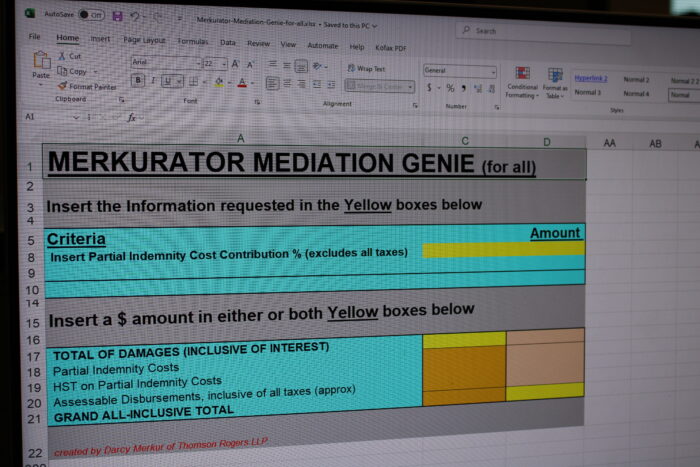Five Tips For Finding The Right Accident Benefit Healthcare Provider
Author(s): Darcy R. Merkur
February 16, 2021

The no-fault accident benefit system in Ontario allows all those injured to choose providers to assist them with required treatment at an insurer’s expense, albeit subject to certain limitations and in keeping with the legislation.
Finding the right healthcare provider to assist you can be challenging.
Here are five tips for finding the right accident benefit healthcare provider if you are in need of treatment following an accident.
1. Access The Trauma Resource Directory
The Trauma Resource Directory is a wonderful free online tool. It contains more than 1,000 resumes from healthcare providers throughout Ontario familiar with the Ontario accident benefit system. The Ontario no-fault accident benefit system, for example, requires people to be registered to bill insurers directly (through something called HCAI). The Trauma Resource Directory provides information regarding the location of the providers, the languages they speak (if that is relevant) and more information about their credentials. There is also information about lawyers that they have worked with who can be consulted about the quality of their services.
2. Interview Multiple Providers Where Appropriate
Healthcare providers will be happy to spend a few minutes with you introducing themselves and explaining how they may be able to assist you. You are free to consult with a few different providers to determine who can best assist you. Personality does matter in these circumstances, so consider finding someone whose personality is well suited to help the injured person and to collaborate with the family where necessary and appropriate.
3. Consider The Provider’s Network
The Ontario accident benefit system relies heavily on healthcare providers to help direct injured persons to other suitable healthcare providers. Historically, case managers were engaged from the outset to coordinate rehabilitation on behalf of serious accident victims, but the new legislation delays access to the ‘catastrophic impairment’ designation, thus denying the accident victim the right to hire a case manager at the insurer’s expense at the outset. Without a case manager, the initial healthcare provider (often a private Occupational Therapist) is relied on to help locate other suitable providers to assist.
With all of that in mind, when finding somebody to assist you, you may want to evaluate the scope of their network to ensure that they are in a position to direct you to other providers that can assist. Having a large network that they can work with might mean being part of a bigger rehabilitation company or it could simple be someone with decades of experience, especially experience in a certain geographic area or with a certain type of injury.
Successful rehabilitation is a team effort that requires interaction and collaboration between disciplines, so finding someone that knows the rehabilitation community well is ideal.
4. Keeping Rates Within the Legislation
The no-fault accident benefit system in Ontario has varying mandated hourly rates that insurers must pay to healthcare disciplines. Some excellent providers charge hourly rates that exceed those restricted amounts and, therefore, getting them involved can pose some financial roadblocks.
Where a lawsuit is available to the injured party (i.e. where they can sue an at-fault party), then the injured party can give instructions to their lawyer to engage the provider even at rates above the approved rates to be paid the additional amount when their lawsuit is successfully resolved (called “protected” accounts).
Certain disciplines, like social workers, regularly face debates with insurance adjusters about the hourly rate that they can charge given that their hourly rates are not circumscribed by the legislation.
Despite these difficulties, especially where a lawsuit is available accident victims should wherever possible still avail themselves of the valuable services of private social workers to assist even if their rates cannot be fully covered by the restricted Ontario accident benefit system.
5. Complacency Should Not Be Tolerated
The best providers are those that continue to be enthusiastic and positive about the victim’s rehabilitation. Helping accident victims can be emotionally difficult at times, and if you find yourself being assisted by a therapist that seems burnt out or less enthusiastic helping you than they were from the outset, then consider replacing them. The choice is yours, though you should rely on guidance from your trusted healthcare providers and from your trauma lawyer.
At Thomson Rogers we have spent decades assisting thousands of injured Ontario motorists through the complex accident benefit process.
By following the five tips for finding the right accident benefit healthcare provider above you will put us in a much better position to help you access the treatment you need following a serious motor vehicle accident.
At Thomson Rogers we offer free consultations so please feel free to reach out to us at any time. We are here to help.
Darcy Merkur is a highly regarded Ontario trauma lawyer helping accident victims such as pedestrians, cyclists and motorists, who have sustained catastrophic injuries.
Darcy is the first lawyer in Canada to be qualified as a Certified Brain Injury Specialist by the Brain Injury Association of America. In addition, Darcy has been recognized as a Certified Specialist in Civil Litigation by the Law Society of Ontario, is listed in peer-reviewed publications – Lexpert® and The Best Lawyers™ in Canada, is ranked AV pre-eminent in Martindale-Hubbell ® and is a partner at Thomson Rogers, one of Canada’s Top 10 Personal Injury Law Firms as selected by Canadian Lawyer Magazine.
Darcy can be reached at 416-868-3176 or by EMAIL.
Share this






